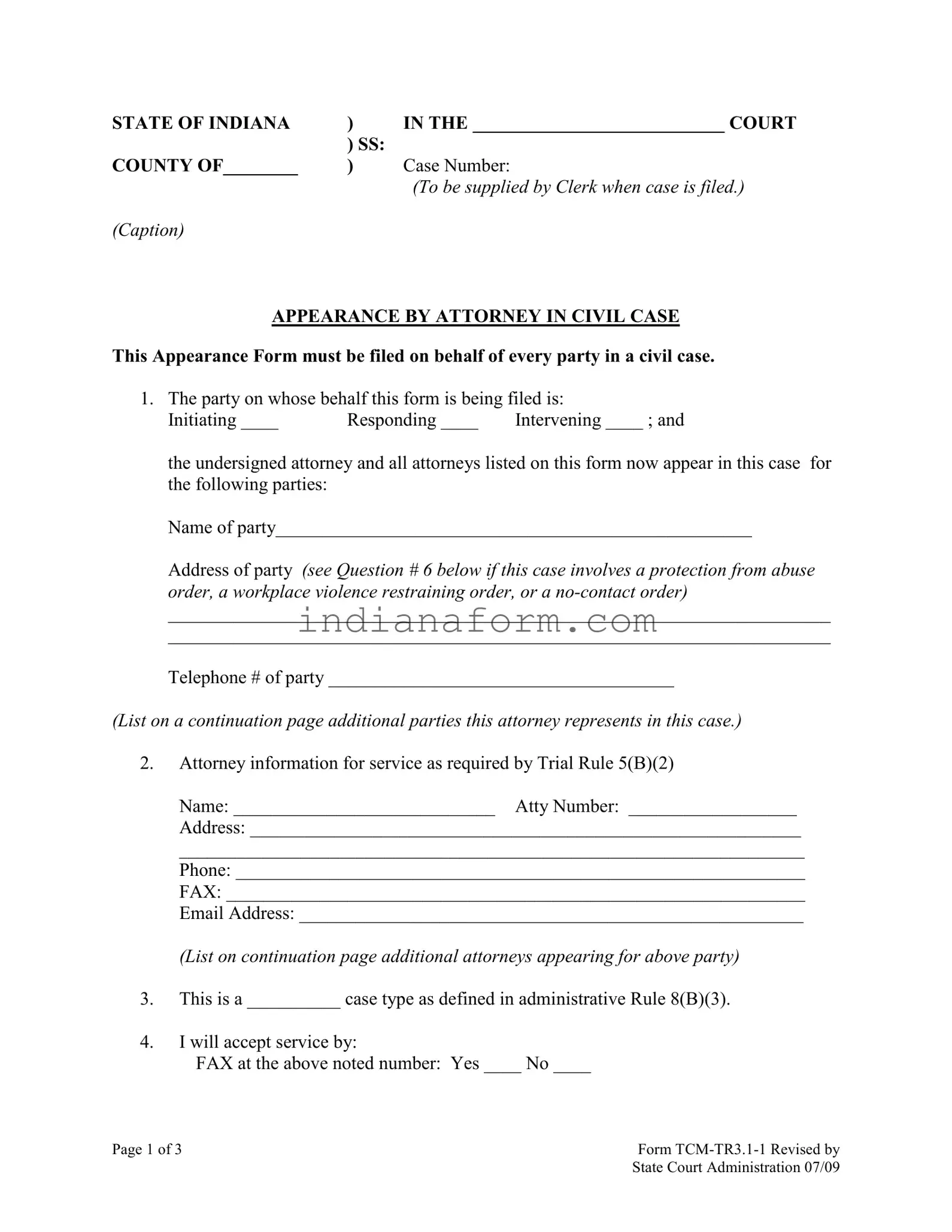What is an Appearance Form in Indiana?
An Appearance Form is a document filed in Indiana courts by an attorney on behalf of a party in a civil case. It officially notifies the court that the attorney represents the party listed in the case, detailing the party’s and attorney's information such as names, addresses, and contact details. This form is required for every party involved in a civil case.
Who needs to file an Appearance Form?
Every party in a civil case must have an Appearance Form filed on their behalf. This includes parties initiating a case, responding to a case, or intervening in a case. The form must be filed by the attorney representing the party.
What information is required on the Appearance Form?
The form requires several pieces of information: the type of party (initiating, responding, intervening), names and contact information of the party and the representing attorney, the type of case, and whether the attorney will accept service by fax or email. Additionally, if relevant, it needs info on child support issues, protection orders, petitions for involuntary commitment, related cases, and any additional information as required by local rules.
Is it necessary to include personal addresses if there’s a protection order?
No. In cases involving a protection order, workplace violence restraining order, or a no-contact order, the initiating party must provide an address for legal service that does not disclose the petitioner's location. Options include the attorney's address, the Attorney General Confidentiality program address, or another safe address.
How do I indicate the case involves child support issues?
If the case involves child support matters, you must indicate this on the Appearance Form and provide social security numbers for all family members involved. This information should be attached as a confidential document on light green paper.
What if my case is related to a petition for involuntary commitment?
In cases of involuntary commitment petitions, you must provide the name of the individual subject to the petition, their state of residence, and at least one piece of identifying information such as the date of birth, driver’s license number, state ID number, FBI number, Department of Corrections number, or their social security number (the latter on a separate, confidential document).
How do I handle related cases?
If there are related cases, you must list them on a continuation page attached to the Appearance Form, ensuring the court is aware of all connected legal matters.
What additional information might be required by local rules?
Local court rules may require additional information specific to the jurisdiction the case is being filed in. This can include anything from specific formatting requirements to additional forms or documents. It's essential to check with the local court to ensure compliance with all local requirements.
Are there any requirements for additional party members?
If there are additional parties represented by the attorney in the case, their information must also be listed on a continuation page. This ensures that the court is aware of all parties represented and their respective legal counsel.
What is a Certificate of Service, and do I need to attach it?
A Certificate of Service is a document that confirms the Appearance Form and any other documents have been served on all other parties involved in the case. It is a required attachment to the Appearance Form to prove that all parties have been properly notified of the attorney's representation and any proceedings related to the case.
